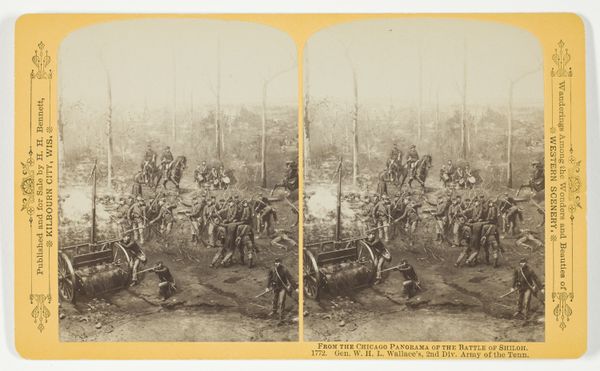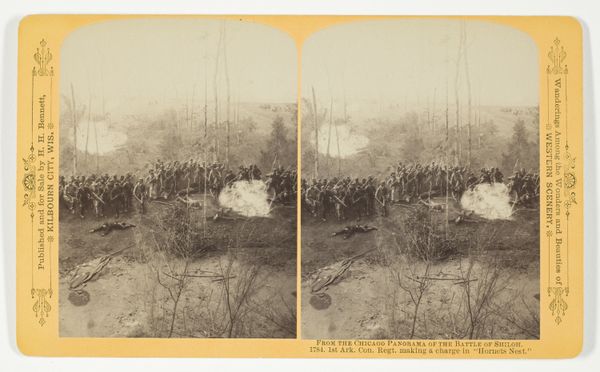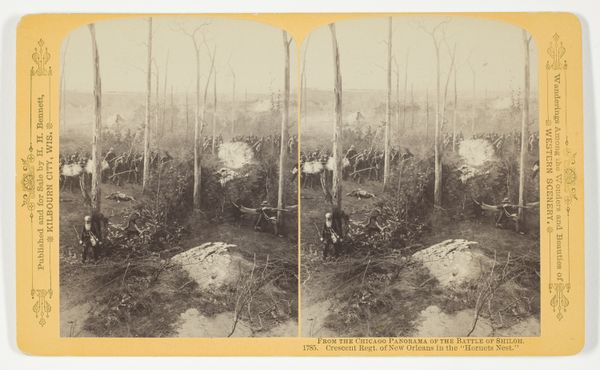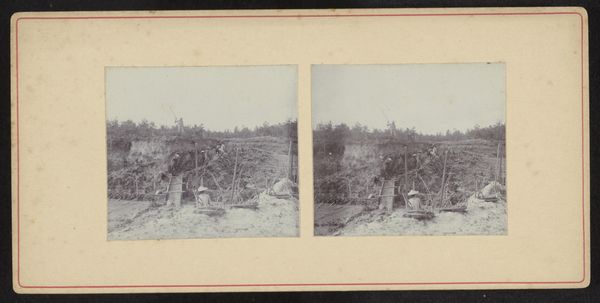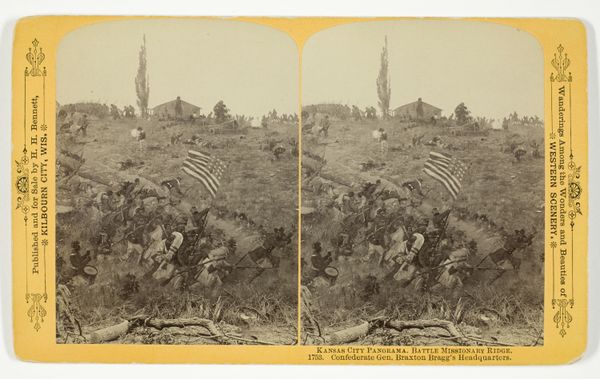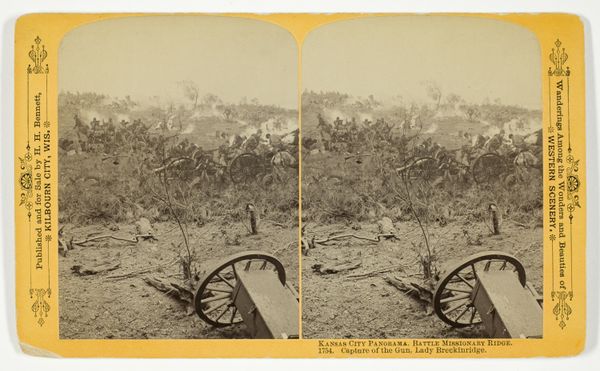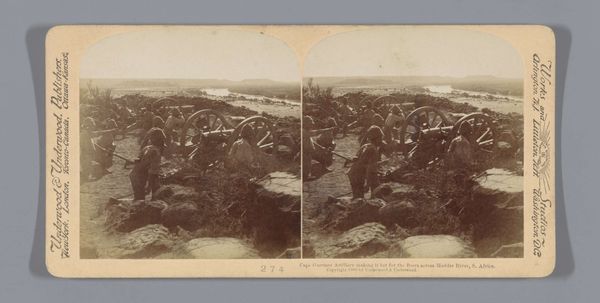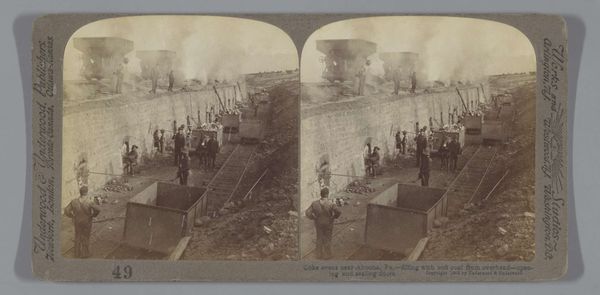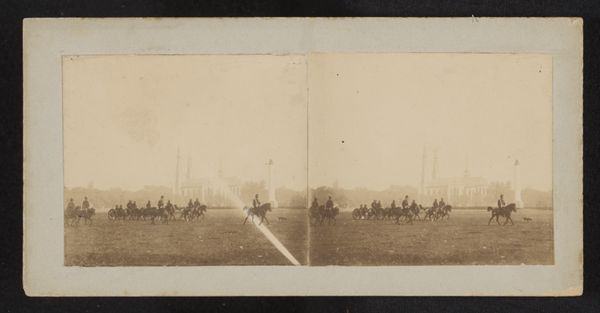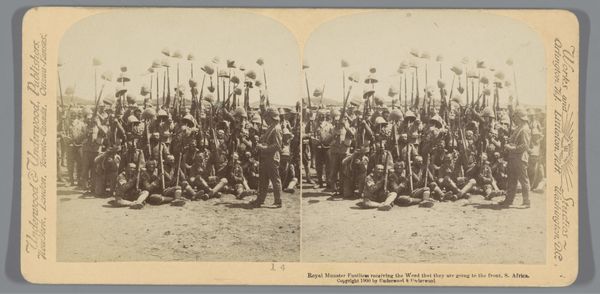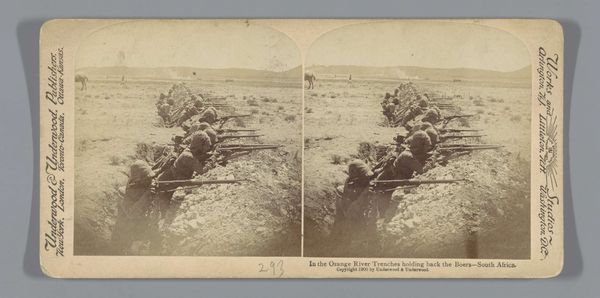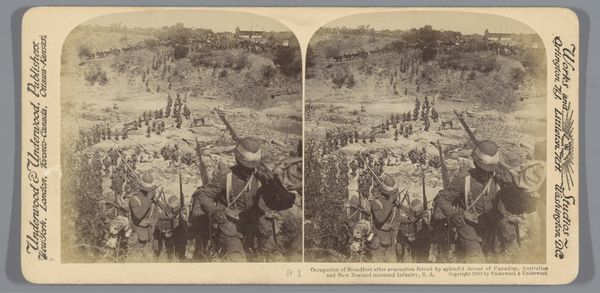
print, photography, albumen-print
# print
#
landscape
#
photography
#
history-painting
#
albumen-print
Dimensions: 10 × 7.5 cm (each image); 10.8 × 17.7 cm (card)
Copyright: Public Domain
Curator: I find this albumen print mesmerizing! Produced by Henry Hamilton Bennett around 1887, it's titled "Gen. Grant giving order to Gen. McPherson" and resides here at The Art Institute of Chicago. What are your immediate thoughts? Editor: Stark. Immediately, it strikes me as a haunting tableau, even with the grainy texture. There’s a strange tension between the posed figures and the implied chaos of battle. The tones feel mournful, reflective. Curator: I agree completely. It's like a still from a historical drama, isn’t it? The meticulous arrangement of figures, from the fallen soldiers in the foreground to the mounted officers in the background, all funnel your eye toward the center. There’s this calculated depth created despite it being, essentially, a staged moment. Editor: Precisely. The formal organization pulls against the narrative; the crisp lines of the uniforms seem strangely out of place amidst the dirt and debris. It raises questions about how we frame history itself. Note the dramatic smoke emerging from a rifle right up front; is this supposed to evoke heroism or sheer brutal chaos? Curator: Perhaps both? Bennett aimed to capture not just a historical event but also its emotional weight. He's presenting Grant as resolute and composed amid conflict, maybe as a beacon of command, which may glorify the generals rather than honestly represent the tragic event itself. Editor: Which feeds right into the artistic conventions of history painting, that strive toward iconic representation above documentary truth. You know I believe the semiotics, combined with an obvious compositional arrangement, are meant to drive a specific ideological narrative. It feels… propagandistic. Curator: It might. Still, it evokes empathy through its landscape setting. And don't discount its stereoscopic effect – it was designed to be viewed with a special device to enhance its three-dimensionality, drawing viewers into the heart of the conflict. This offers a window to the past, albeit one with complex framing, and that makes the experience valuable. Editor: Indeed. While its perspective on the conflict might be problematic today, that it provokes such immediate engagement underscores the strength of its formal elements and emotional cues, wouldn't you agree? Curator: I couldn't agree more. Every detail invites questions. Thanks for taking this visual walk with me! Editor: My pleasure. It's pieces like this that continue to inform our own artistic interpretations, however problematic, so thank you.
Comments
No comments
Be the first to comment and join the conversation on the ultimate creative platform.
